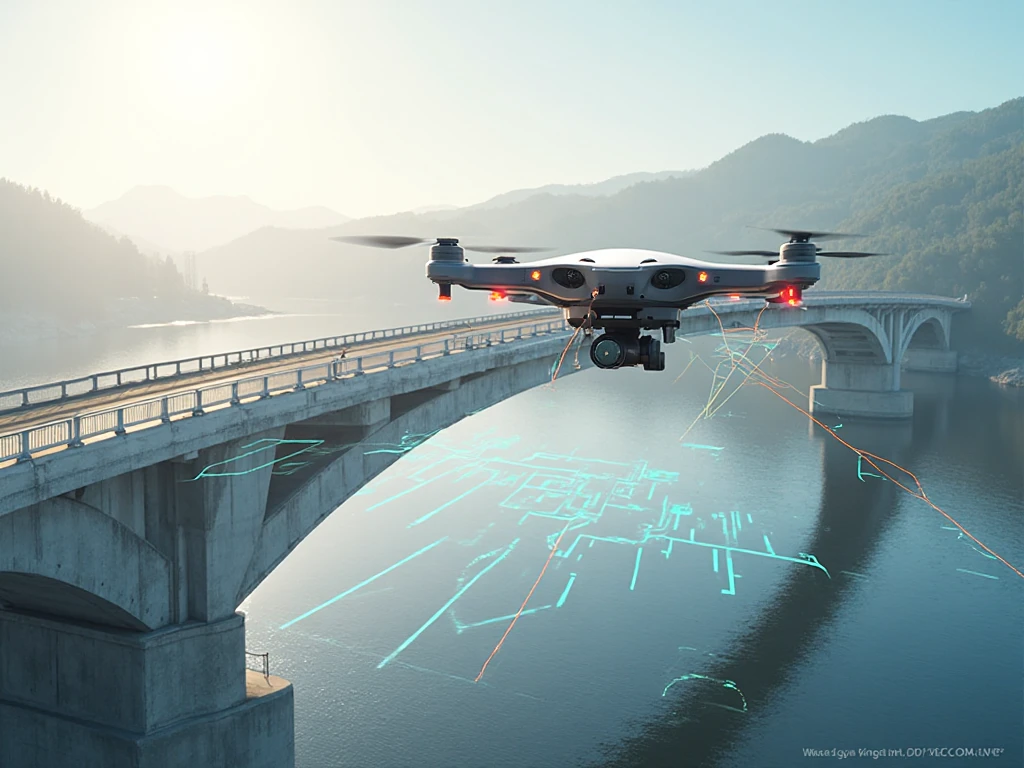Revolutionary Predictive Maintenance Using AI of Public Infrastructure: Enhancing Efficiency and Reliability
Artificial Intelligence (AI) is reshaping the future of infrastructure maintenance, turning reactive repairs into proactive, data-driven solutions. Through predictive analytics, real-time monitoring, and smart diagnostics, AI is revolutionising how cities maintain their public assets, saving billions while enhancing safety, sustainability, and efficiency.
A Paradigm Shift in Infrastructure Maintenance
For decades, maintenance of public infrastructure, from bridges and roads to water systems and power grids, has relied on traditional inspection routines and reactive repairs. While these methods have served their purpose, they are increasingly insufficient in a world where urban systems are complex, ageing, and under immense demand.
Enter predictive maintenance using AI, a groundbreaking approach that leverages data, IoT devices, sensors, and machine learning to anticipate failures before they occur. Governments and infrastructure agencies worldwide are beginning to adopt this transformative shift. The integration of AI infrastructure maintenance technologies not only ensures reliability and safety but also extends the life of vital public assets.
How AI is Transforming Predictive Maintenance in Infrastructure
AI-driven predictive maintenance is more than a technological upgrade; it’s a complete paradigm shift. Here’s how artificial intelligence in public works is revolutionising traditional maintenance practices:

1. Real-Time Infrastructure Monitoring with Artificial Intelligence
Smart sensors installed across public assets collect continuous streams of data. AI algorithms then process this data to detect irregularities such as stress fractures in bridges, corrosion in pipelines, or voltage fluctuations in electrical systems.
The result is real-time infrastructure monitoring with artificial intelligence, a system that alerts engineers before failures occur, ensuring timely interventions and uninterrupted public services.
2. Predictive Analytics for Public Asset Management
AI-powered predictive analytics helps cities prioritise maintenance tasks based on urgency and impact. Instead of using a one-size-fits-all maintenance schedule, governments can focus resources on high-risk areas.
For example, if a water pipeline shows early signs of pressure imbalance, predictive analytics can forecast potential leaks and trigger repairs before significant water loss occurs. This not only optimises maintenance schedules but also reduces operational costs.
3. Integrating AI with Geographic Information Systems (GIS)
When combined with GIS mapping, smart infrastructure monitoring becomes even more powerful. Engineers can visualise asset conditions across an entire city, identifying hotspots, tracking repair histories, and planning preventive maintenance routes with pinpoint accuracy.
This geospatial intelligence empowers decision-makers with a city-wide view of infrastructure health, supporting smarter budgeting and faster response times.
4. Machine Learning and Historical Data Correlation
AI models learn continuously from historical data, identifying trends and correlations between environmental factors, usage patterns, and failure rates. Over time, these models refine their accuracy, ensuring predictive insights become more precise and reliable.
For example, by analysing years of bridge inspection data alongside weather patterns, an AI system can forecast which bridges are more vulnerable to deterioration during harsh winters.
Real-World Examples of Predictive Maintenance Using AI
Across the globe, governments and cities are already experiencing the benefits of AI infrastructure maintenance. Let’s examine some real-world examples that demonstrate how predictive maintenance is transforming public works.

1. Smart Bridges in the United States
In several U.S. states, departments of transportation have deployed AI-enabled sensors on bridges to monitor vibrations and stress loads, such as the AI-powered digital twins for inspections on Minneapolis’s Stone Arch Bridge. These sensors send continuous data to AI systems that analyse patterns and predict when repairs are needed. This has reduced emergency closures and improved safety.
2. The Netherlands’ Smart Dikes Initiative
Given its unique geography, the Netherlands relies heavily on flood prevention infrastructure. Through smart infrastructure monitoring, Dutch engineers utilise AI and IoT sensors to predict the performance of dikes and levees. This predictive system helps anticipate weaknesses before heavy rains or rising tides cause damage. The smart dikes also inflate automatically once the water level increases.
3. Singapore’s Intelligent Water Network
Singapore’s Public Utilities Board uses AI-powered maintenance solutions to monitor its vast water infrastructure network. AI algorithms analyse data from pressure and flow sensors to detect leaks, blockages, or contamination risks in real time, saving millions in maintenance costs.
4. Japan’s Earthquake-Resilient Infrastructure
Japan has invested in AI-driven earthquake predictive systems that monitor seismic activity and structural integrity of buildings and bridges. This enables authorities to identify and address vulnerable areas, thereby enhancing resilience and public safety.
These key examples demonstrate how predictive analytics for public asset management is transforming infrastructure maintenance from a reactive service to a proactive, intelligent operation.
Data-Driven Maintenance Systems and the Role of Engineers
AI does not replace engineers; it empowers them to do their jobs more effectively. Civil, structural, and mechanical engineers now rely on data-driven maintenance systems to make informed technical decisions.
These systems combine real-time field data, machine learning predictions, and historical maintenance logs to create digital twins: virtual replicas of physical infrastructure assets. Engineers can simulate scenarios, assess risk, and prioritise interventions based on AI-generated insights.
This integration enhances interdisciplinary collaboration, creating a new standard for infrastructure asset management that is both scientific and adaptive.
Benefits of Predictive Maintenance Using AI for Public Infrastructure
The adoption of predictive maintenance using AI delivers transformative benefits for governments, citizens, and the environment.

1. Enhanced Efficiency and Cost Savings
Traditional reactive maintenance models often waste resources by repairing assets too early or too late. AI enables targeted interventions, reducing unnecessary inspections and minimising downtime. Studies show predictive maintenance can cut maintenance costs by up to 30% and extend asset lifespans by 20–40%.
2. Improved Safety and Reliability
AI’s ability to detect early signs of failure ensures that public infrastructure remains safe for users. For instance, identifying stress points in a bridge before structural cracks appear can prevent catastrophic accidents.
3. Environmental Sustainability
Green building technology now reduces material waste and optimises energy consumption. Therefore, AI-powered maintenance solutions contribute to greener cities. Predictive systems also minimise the carbon footprint associated with emergency repairs and asset replacements.
4. Data-Driven Decision-Making
Data collected from sensors becomes a valuable asset for policymakers. Governments can use insights from data-driven maintenance systems to plan budgets, prioritise critical repairs, and justify public spending based on measurable evidence.
5. Extended Asset Lifespan
By addressing minor issues before they escalate, infrastructure assets last longer, delaying expensive overhauls and replacements. Roads, bridges, water systems, and utilities are maintained through predictive maintenance using AI, ensuring they operate at peak performance for extended periods and yield better returns on public investment.
6. Optimised Workforce Allocation
AI helps maintenance teams work smarter, not harder. Instead of responding to random breakdowns, crews receive prioritised tasks based on real-time data insights. This not only improves efficiency but also reduces fatigue and operational strain on engineers and technicians.
7. Public Trust and Transparency
With smarter maintenance and fewer service interruptions, citizens gain confidence in government systems. When agencies can demonstrate that their infrastructure decisions are data-driven and efficient, public trust naturally increases, fostering stronger civic relationships.
Challenges and Future of Predictive Maintenance Using AI
Despite its benefits, implementing predictive maintenance in public infrastructure comes with challenges that must be addressed to achieve full adoption.

1. High Initial Costs and Legacy Systems
Integrating AI requires substantial upfront investment in sensors, data platforms, and training. Many municipalities still rely on outdated legacy systems, making data integration complex. However, as the costs of IoT devices and AI platforms continue to drop, adoption is becoming more feasible.
2. Data Management and Cybersecurity Risks
The success of data-driven maintenance systems relies on the collection and analysis of massive amounts of data. Managing, storing, and securing this data against cyber threats is critical to maintain public trust and operational continuity.
3. Skill Gaps and Workforce Adaptation
Implementing AI requires skilled data analysts, engineers, and technicians. Governments must invest in capacity-building and upskilling initiatives to ensure that workers can effectively leverage AI systems.
4. Standardisation and Policy Frameworks
As predictive maintenance grows, establishing standard operating procedures and regulatory frameworks becomes essential to ensure interoperability between systems and transparency in data usage.
Despite these hurdles, the future of AI in infrastructure maintenance looks promising. With increasing urbanisation, ageing assets, and the global push for sustainable infrastructure, predictive maintenance is poised to become a cornerstone of modern public asset management.
The Future of Public Infrastructure: AI as a Game Changer

The evolution of predictive maintenance using AI represents a transformative moment for the public sector. In the coming years, we can expect cities to operate more like living organisms, self-monitoring, adaptive, and sustainable.
Imagine roads that detect early signs of erosion, bridges that send alerts when under stress, or water systems that self-correct pressure imbalances, all coordinated by AI. This level of automation will significantly reduce maintenance costs, enhance service delivery, and ensure the longevity of the infrastructure.
Furthermore, as smart cities leading the future in urban innovation expand globally, predictive maintenance will be at the heart of urban resilience and sustainability strategies, aligning with global goals like the UN’s Sustainable Development Goals (SDGs) number 11 for sustainable cities and communities.
Seeking to understand how predictive infrastructure management aligns with construction? You can also explore AI in Civil Engineering: Powering a New Era of Innovation for insight into trending applications of AI in civil engineering.
Conclusion: Building the Future with Predictive Precision
The shift toward predictive maintenance using AI marks the dawn of a smarter, safer, and more sustainable era in infrastructure management. By harnessing the power of artificial intelligence, governments can eliminate guesswork, cut costs, and prevent catastrophic failures before they occur.
This is not just a technological revolution, it’s a cultural one. Public agencies are transitioning from maintenance as an afterthought to maintenance as foresight, empowering societies to build infrastructures that endure, adapt, and thrive. With predictive systems driving AI-powered maintenance solutions, the future of public infrastructure will not only be built, but also intelligently maintained.
Stay Ahead with Construction Frontier
As the construction and infrastructure landscape evolves, staying informed is key. Discover the latest trends in AI infrastructure maintenance, predictive analytics, and smart construction technologies shaping cities of the future. At ConstructionFrontier.com, we offer in-depth insights into the technologies, sustainability, and innovations that are shaping tomorrow’s built environment.





